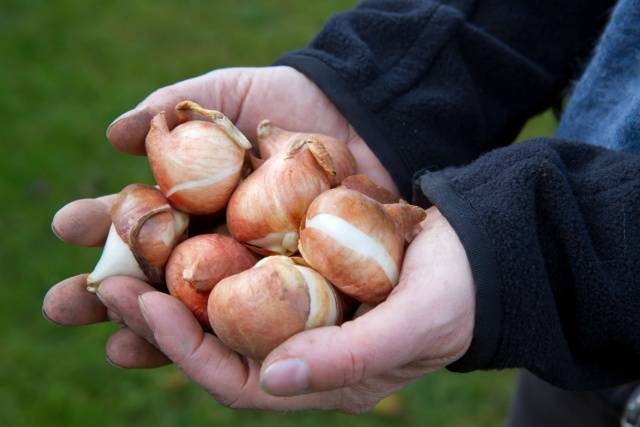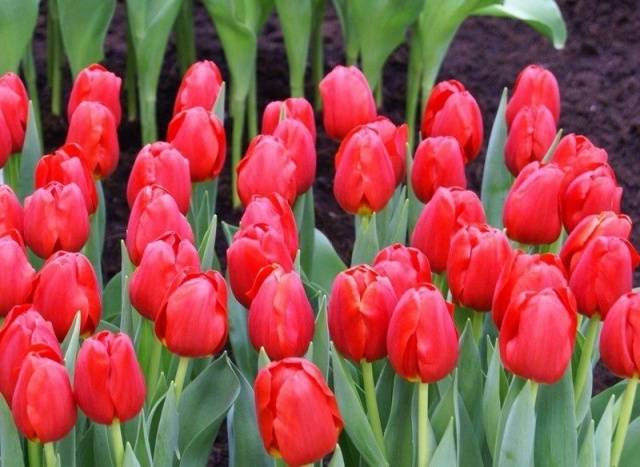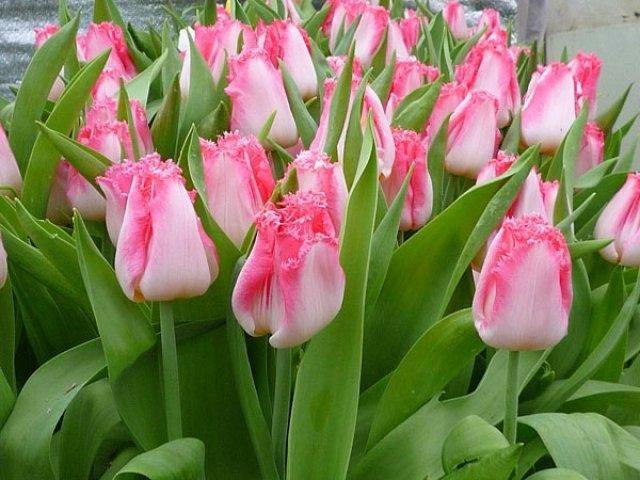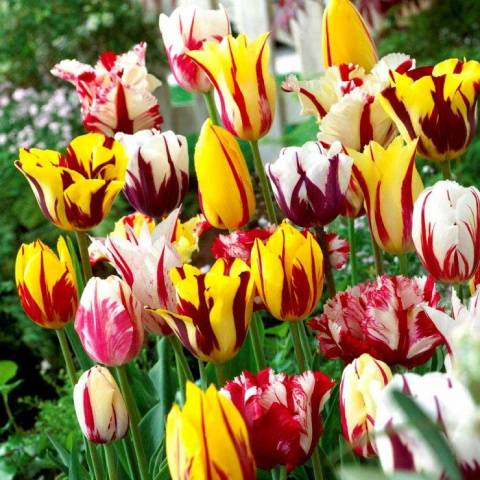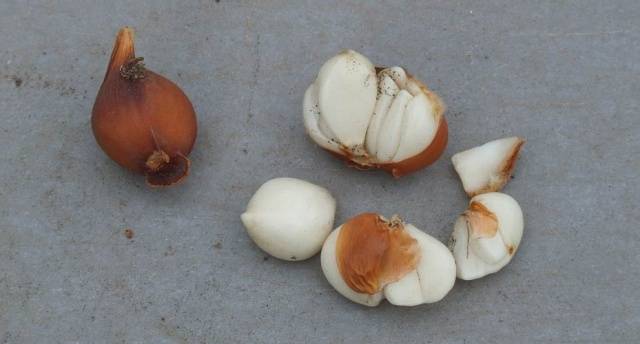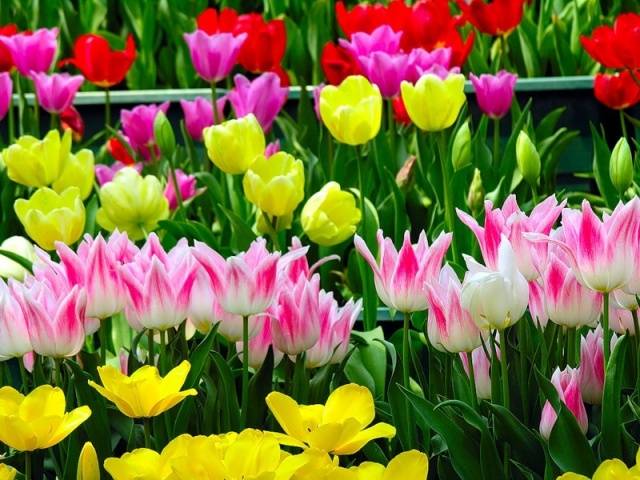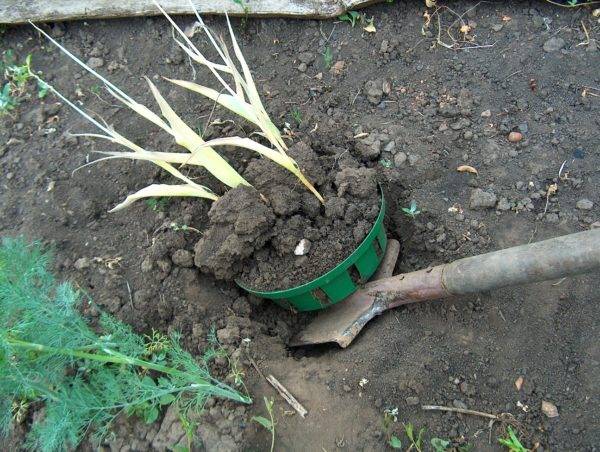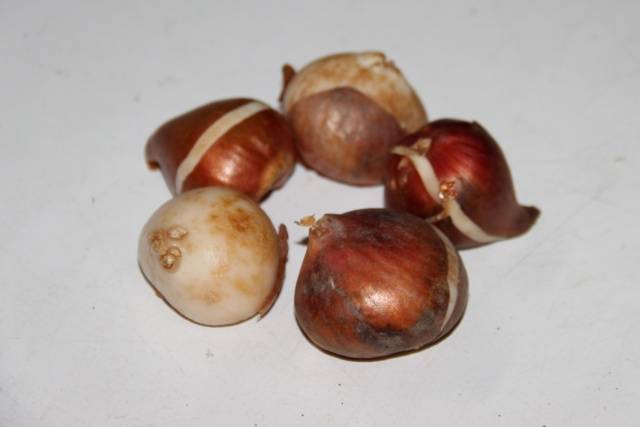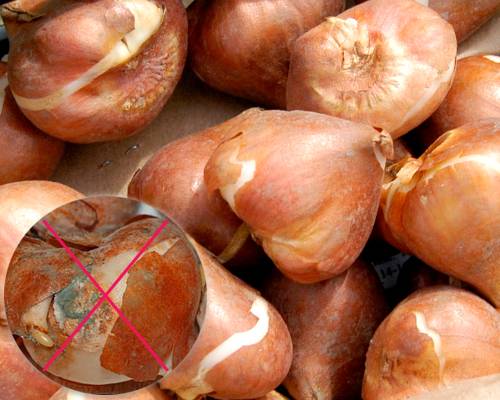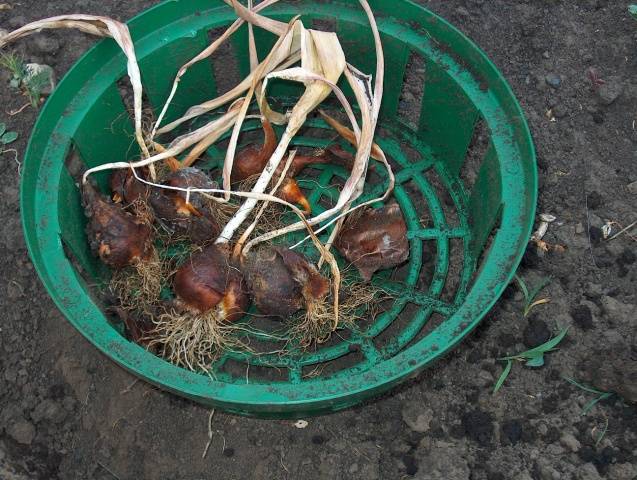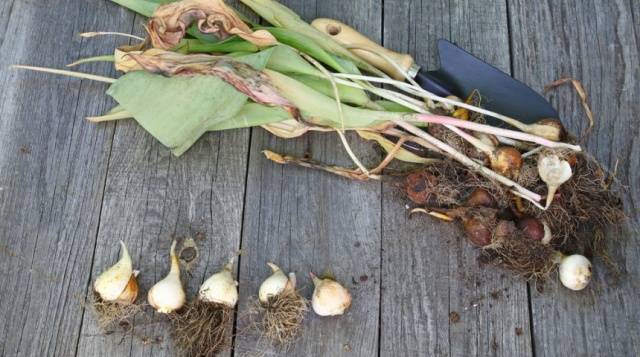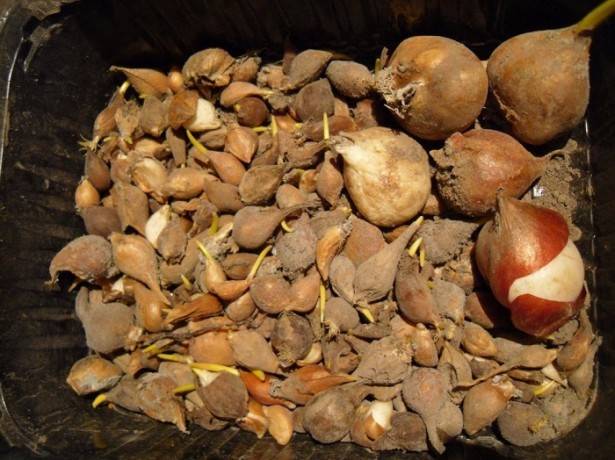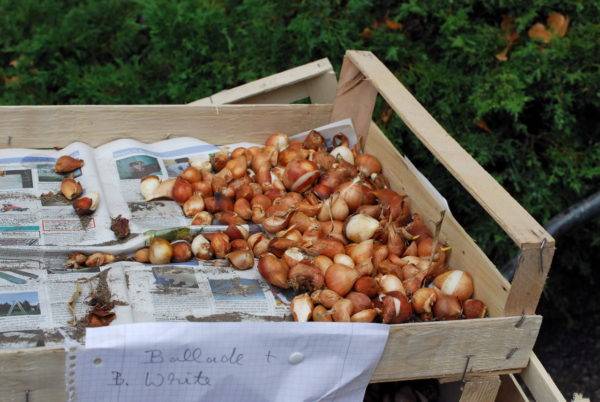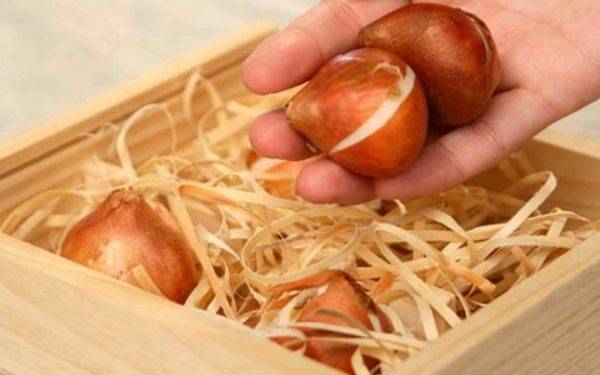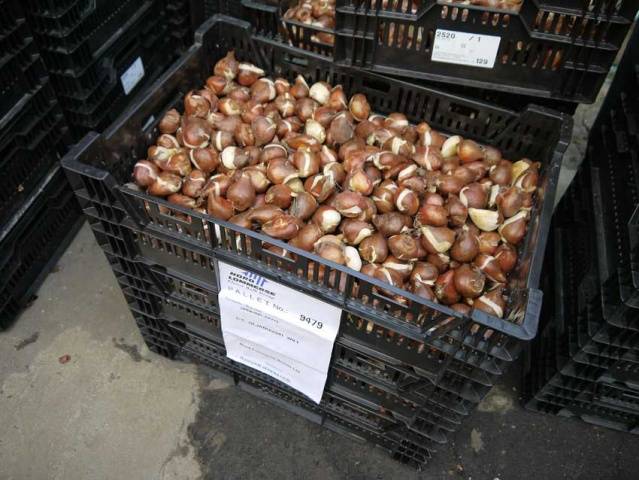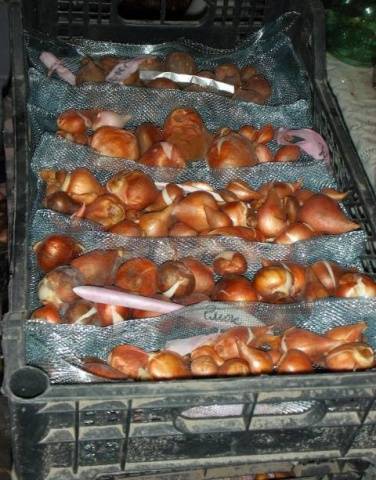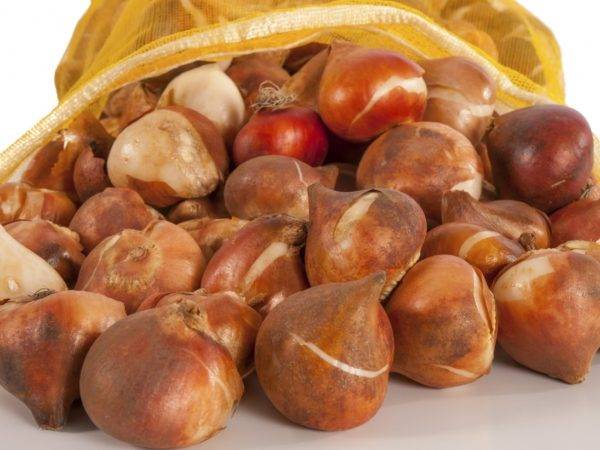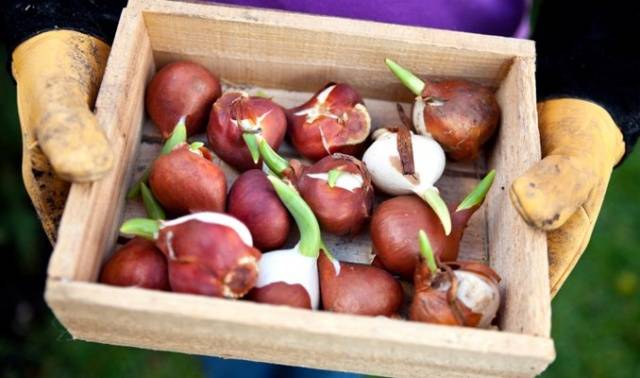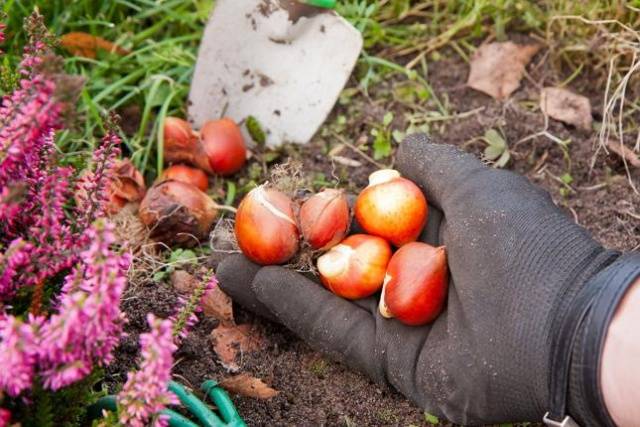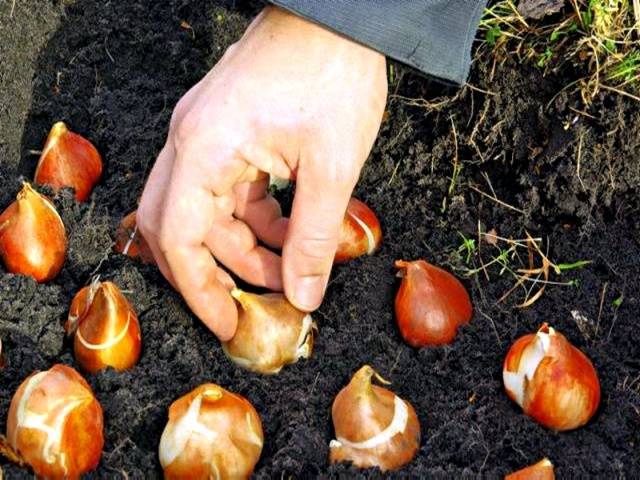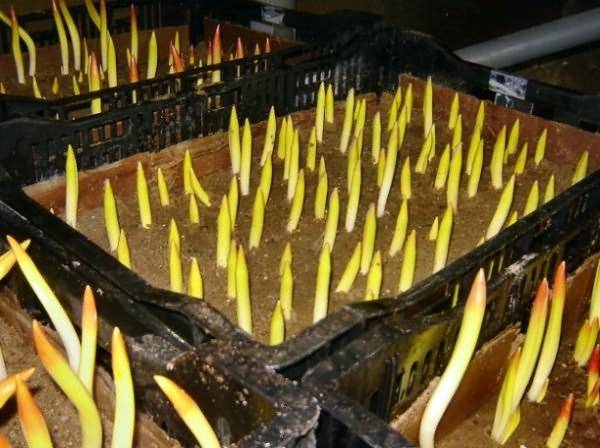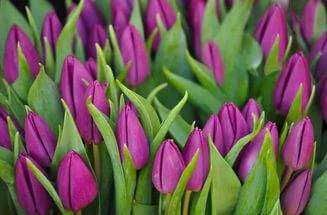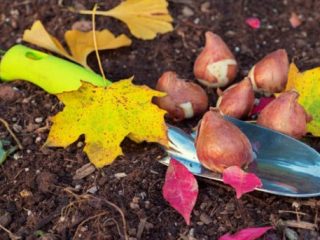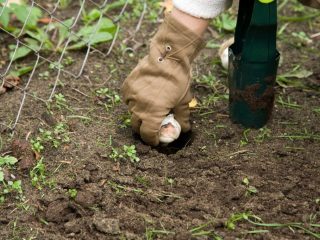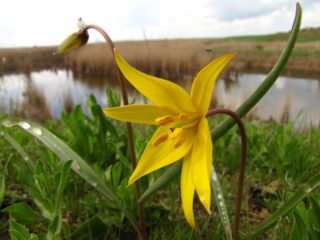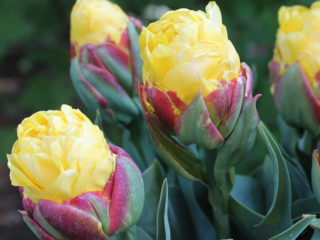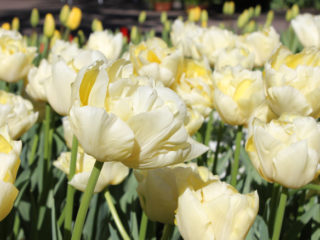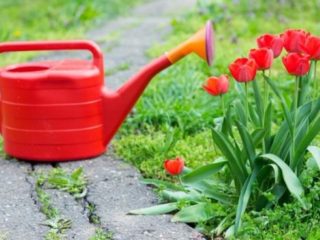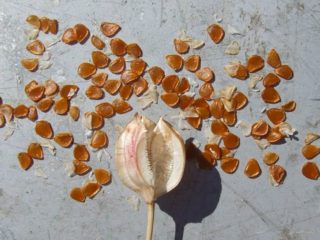Content
Every gardener, no matter what kind of flowers he is breeding: indoor or garden, knows very well that every plant requires care and attention. And every minute spent returns a hundredfold, delighting the owner of rare flowers with lush blooms. Therefore, they spare no time, no effort, and sometimes even money on purchasing valuable varieties and caring for their pets. And how disappointing it can sometimes be, having spent a considerable amount on purchasing seed, not to see the desired beautiful flowers in the flowerbed in the spring. And sometimes many blame the sellers, saying they sold low-quality goods.
In fact, the reason may be much simpler - just non-compliance with the deadlines for digging, storing and planting bulbs. To avoid such unpleasant moments, it is important to know how to store tulip bulbs from the moment they are dug up until the moment they are planted. This process is not burdensome and does not require financial costs.But the plants’ gratitude for your attention and time spent will return to you with lush, delicate buds in early spring.
Why dig up tulip bulbs every year?
Do you really need to dig up tulip bulbs every year? Many will tell you: “No.” In fact, there is no clear answer. And this circumstance depends only on the variety of tulips.
Simple garden flowers are replanted every five or even seven years, considering that there is no need to waste time and effort, they bloom beautifully every autumn. Some varieties require more careful care and are very picky about the timing of digging and planting. And there are also those that cannot be dug up and replanted for two to three years. In any case, information about storage periods and rules will not be superfluous.
Here are just a few reasons why you should dig up tulip bulbs after flowering and store them for short-term storage:
- For lush flowering in spring, it is necessary to create a certain storage regime for tulip bulbs. At this moment, the foundation for the future flower is laid in them - a flower arrow is formed. Mature bulbs should be stored strictly at a temperature of +25˚C, no more, no less. Being deep underground, the bulb does not receive the necessary heat.
- All flowers of the bulbous family have one feature - every year they go deeper into the ground. The deeper they go into the ground, the more difficult it is for weak and tender shoots to break through the soil in the spring.After all, over time, this layer of soil only increases. As a result, the tulip bulbs will simply rot in the ground, not even leaving children for subsequent reproduction. An empty flowerbed is a rather sad sight. Especially in spring, when you really want to see the first colorful flowers.
- Earth. Even the most picky flowers take from the ground everything they need for growth and flowering. Therefore, over time, the soil becomes poor, compacted and becomes unsuitable for plants. This circumstance affects the appearance of flowers, their resistance to diseases and the preservation of varietal characteristics. In the process of digging and planting tubers, you can not only loosen the compacted soil, but also fertilize it with organic and inorganic additives, adding the necessary vitamins to the flowers’ diet.
- If you want to preserve the varietal characteristics of tulips, and also get a large number of children from them, then digging up tulips after flowering and planting them in the fall is simply necessary. Within a couple of months after flowering has ended, it will be difficult to select high-quality seed for subsequent plantings. And if the process of digging up tulip bulbs is excluded, the children will become smaller. Yes, and collecting small onions will be very difficult.
- Humidity during storage is an important factor. For example, if tulips grow in a flowerbed next to other flowers, you will inevitably water them. This way you can destroy the tulip bulbs. After all, during the dormant period, moisture for them is tantamount to a death sentence. Not only do the bulbs begin to rot, they are affected by various diseases, transmitting them to each other in the ground.By digging up and sorting the seed in a timely manner, you can avoid such consequences and rejoice in the spring, looking at tulips that are ideal in shape and color.
- By not separating excess small bulbs from mature ones during the process of digging and sorting, you create an acute shortage of minerals and nutrients necessary for normal plant growth and flowering.
As you can see, there are many reasons to dig up and properly store tulip bulbs at the right time.
Why dig up tulips and how to do it correctly is described in the following video:
When to dig up tulip bulbs
When does this “due date” arrive? Experienced gardeners focus on the color and condition of the leaves. As soon as the tulip leaves begin to fade, you need to prepare for the digging process: prepare the container and storage room. And when the foliage has turned two-thirds yellow, it’s time to dig up the bulbs. It was at this moment that the tulip bulbs have ripened, but the babies have not yet fallen off. Thus, in addition to the natural preservation of the bulbs, we also receive excellent seed material that we grew ourselves. The approximately ideal time for digging and drying in central Russia is the period from the second ten days of June to mid-July. In Siberia, the right time comes a little later - from the beginning to the end of July.
Due to the fact that different regions have different climatic conditions, there is no exact date for starting the digging of these spring flowers. Avid flower growers pay great attention not only to the condition of the foliage, but also to the belonging of tulips to a particular variety, flowering time and climate characteristics.
Even a slight delay is fraught with the following consequences:
- There is a high probability that the bulbs will simply rot in the ground or become infected due to excess moisture.
- Even in two weeks, the children will grow considerably and separate from the main bulb. It will be very difficult to collect them, and the precious seed material will be lost in the soil.
- A month and a half after flowering, the tulip bulbs begin to go deeper. At this time, you can easily damage them or not find them at all.
- In late spring and early summer, as you know, all insects become active. Actively reproducing, they pose a great danger to tulips. For example, the larvae of the cockchafer are very fond of bulbs, but as food, causing irreparable damage to the flowers.
Digging too early also does not bode well. The bulbs will not have time to ripen and the flowers next year will most likely be small and weak.
If you are the happy owner of rare, exclusive varieties, then you need to approach this process more scrupulously and not rely on Russian luck.
A ripe bulb dug up in time should have golden-brown outer scales.
How to properly dig up tulip bulbs
It is necessary to dig up tulip bulbs only in dry weather. It is desirable that the soil is also dry and crumbly.
If you grew tulips in lattice baskets designed specifically for planting bulbs, then the digging process will go without much effort.It is enough to dig the basket out of the ground and shake off the excess soil.
If the tulips were planted in a flower bed or flower arrangement, then the digging process should be approached more carefully. In order not to damage the bulbs, you need to dig them up exclusively with a pitchfork, retreating 15 - 20 cm from the ground part of the plant. Then you will definitely not damage the bulbs.
The remaining soil must be carefully shaken off the excavated plants. Carefully sort the bulbs by variety, size and appearance. The following seed should be removed:
- sick or injured;
- the seed is too small (less than 1 cm in diameter);
- with traces of rot or mold.
It is not recommended to trim the ground part of tulips immediately after digging. It is better to do this after the bulbs have dried.
Place the tulip bulbs in a single layer in a container to dry. Plastic fruit boxes are ideal for this. They provide sufficient air access.
The seed should be dried for 2 to 5 days in dry weather; in high humidity, this period can last up to two weeks. The most important thing is to choose the right place for drying tulip bulbs. It is important to place the container with the bulbs in the shade, excluding the possibility of direct sunlight.
What to do with tulip bulbs immediately after drying
After the tulip bulbs have completely dried, you need to prepare them for storage before planting in the fall.At this stage, you should pay special attention to the appearance of the seed.
- Trim the above-ground part of the plant, but not too close to the bulb itself.
- Easily detachable covering scales should be removed. There is no need to forcefully remove them from the bulbs.
- Soak tulip bulbs in a weak solution of potassium permanganate (light pink solution of potassium permanganate) for 30 minutes to disinfect the seed. If desired, you can use specialized preparations for treating bulbous plants. The fungicide "Maxim" has proven itself to be excellent. It will help both preserve the bulbs and protect them from fungi and diseases.
- Carefully inspect the bulbs again, discarding material unsuitable for storage. Perhaps when the bulbs were dirty, you did not notice any scratches or wormholes.
- Carefully calibrate seed by size and variety.
Dry the bulbs and now they can be placed in containers prepared in advance for storage.
Storage containers
For long-term storage of tulip bulbs at home, the container must be selected in accordance with the size and source material. It is important that the bulbs have free access to air throughout the storage period. Plastic fruit boxes and wooden boxes 10-12 cm high are ideal for this case.
You need to place the bulbs in them in one layer. It is advisable that the tulip bulbs do not touch each other. You can arrange them with dry sawdust or shavings.This material allows you to protect precious seed from rotting by absorbing excess moisture.
It is strictly forbidden to store tulip bulbs at home in cardboard boxes, plastic and metal buckets and basins, or plastic bags. Cardboard is an excellent environment for the development of pathogenic bacteria, and in a closed container the bulbs will quickly become damp and begin to rot.
Storage room
The room for storing bulbs before planting in the fall must be chosen with special care. Indeed, for these delicate spring flowers, humidity and ambient temperature are very important during storage. By creating a favorable microclimate for the bulbs, you can be 100% sure that after a certain time you will get excellent material for planting tulips from storage.
Storage requirements:
- The storage area should be dark. It is important to exclude even short-term exposure to sunlight.
- Ability to check and regulate air temperature and humidity. For varietal tulips, these parameters are of exceptional importance. Sometimes a temperature deviation of just 3˚C or 4˚C in one direction or another threatens not only the degeneration of the variety, but also the absence of flowers in the spring flowerbed.
- No rodents that can cause irreparable damage to the bulbs. If a basement is chosen to store the bulbs until spring, you can pre-treat it, eliminating any possibility of pest penetration.
In a private home, the best places for storing bulbs at home are considered to be a basement, barn or attic. In an apartment, unfortunately, it is more difficult to choose the ideal place to store the bulbs.But even here, flower lovers get out of the situation by placing boxes with bulbs under the bed or on the balcony.
There are, of course, special heat chambers that help preserve seed material. The microclimate in them is saved automatically; you just need to set the parameters correctly on the display. But not every gardener can afford such devices.
There is an opinion that the bulbs can be perfectly stored in a regular refrigerator, on the bottom shelf. Such a place is completely unsuitable for storing seed. According to the storage rules, for the first two months the bulbs must be provided with an increased temperature (+25˚С, +15˚С). At home, it is not possible to create appropriate conditions in refrigerators and gradually reduce the temperature. Therefore, you should not experiment, but rather make an effort and choose another place for storage.
Storage microclimate
An important condition for the safety of seed material is to ensure temperature and humidity conditions in the storage. These factors affect not only the safety of the bulbs before planting, but also flowering and the preservation of varietal characteristics. For example, if the temperature is too high or the humidity is insufficient, the bulbs will dry out.
But with high humidity there is a risk of the development and spread of fungal diseases. There is also a risk that the bulbs will begin to sprout prematurely. In both cases, all seed material will inevitably die.Therefore, the creation of a microclimate in a room for storing tulip bulbs, both in summer and in winter, should be approached with the utmost care.
During the first month of storage, the bulbs should be stored at a temperature of +24˚С +25˚С. However, in August the temperature must be reduced by 5˚C, and in September – by another 5˚C. Thus, for autumn planting, seed should be stored at +15˚C.
Humidity in the room must be maintained at 65 - 70%. The bulbs immediately signal to you that there is insufficient moisture: they will become soft and begin to lose their elasticity. Therefore, as soon as you notice that the humidity is low, you can place a small container of water indoors or near the container with the seed.
Under such conditions, you will keep all the bulbs safe and sound until autumn planting. If you carried out all the procedures in accordance with the above rules, then before planting you will see the results of your labors - the bulb should be dry, clean and without the slightest signs of germination.
You will see how to create ideal storage conditions for bulbs in the following video:
Regular checking of seed
The fact that you put tulip bulbs in storage until the fall does not mean that they now do not need any care. On the contrary, it is necessary to regularly check the storage microclimate at least once a week and conduct a cursory analysis of the seed at least once a month. Bulbs that show signs of disease or spots of rot must be immediately removed from the container. They must be destroyed. This procedure is done in order to prevent the spread of the disease and the complete infection of all tulip bulbs.This check does not take much time, but the result will only be positive.
Treatment after storage
Despite the fact that you have carefully sorted and processed all the seed in the summer and regularly monitored its safety until the fall, before planting the bulbs, it is still worth repeating a couple of steps. It is necessary to carry out crucial calibration and repeated disinfection of tulip bulbs from rot and fungi before planting them in the ground. This work will not take much time, but you will be sure that everything was done correctly. And the result of your actions will be a riot of tulips blooming in the area.
Under what conditions should tulip bulbs be stored until spring?
At times, the surrounding reality dictates its conditions to us. If the seed was purchased too late, or it is not possible to plant the tulip bulbs in a timely manner, you can save them until spring.
But at the same time it is necessary to follow several rules.
- In the fall, plant the bulbs in boxes with soil. The soil for bulbous plants should be prepared in advance. The height of the soil should be at least 40 cm. The distance between the bulbs is 5 cm.
- Place the boxes with planted tulip bulbs in the basement. It should be noted that the air temperature in the basement should be 3˚C - 5˚C, no more. At elevated temperatures, the bulbs will germinate too quickly; at low temperatures, they will freeze.
- Once a week you need to briefly inspect your future flowers. If the soil in the boxes is too dry, you need to slightly moisten it. Under no circumstances should you flood the plantings - the bulbs will simply rot.
- The first shoots should appear at the end of February - beginning of March.
- With the onset of spring, the boxes with sprouted bulbs should be taken outside, and in a few weeks you will be able to admire the first spring flowers.
Over the winter, the bulbs have taken root well, and the slightest disruption of the root system will lead to disastrous results: if there is a good and developed above-ground part of the plant in early spring, you will not see flowers this year.
Preserving tulip bulbs in winter is a troublesome task, and therefore experienced gardeners advise taking care of the seed in advance, that is, in summer and early autumn. It is necessary to plant the bulbs strictly in the autumn so that the tulips bloom profusely in the spring. At a later period, it is better not to buy seed and not plan planting work.
If you follow the above rules for digging and drying, as well as the storage conditions for tulip bulbs, you can not only admire the bright colors of the coming spring, but also rightfully be proud of the beautiful flowers you have grown with your own hands.
